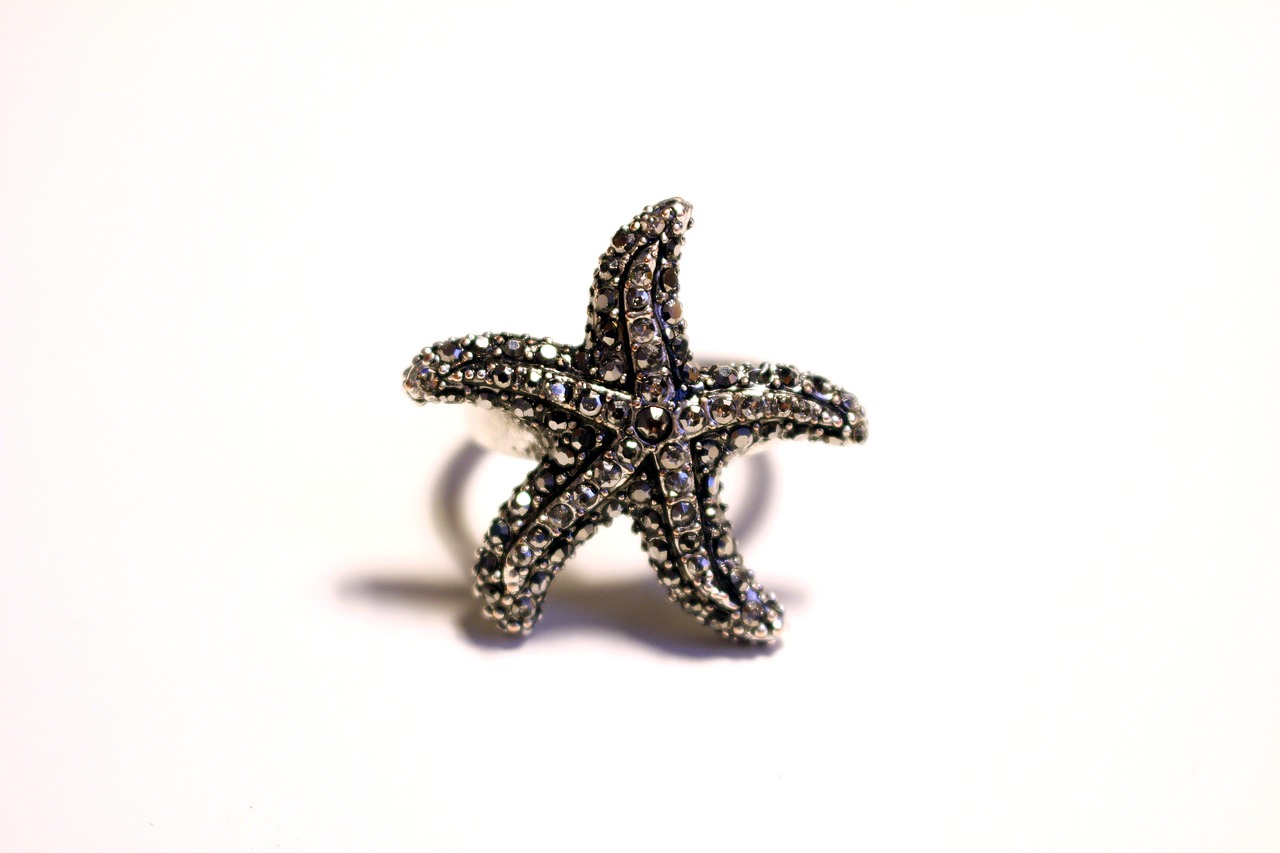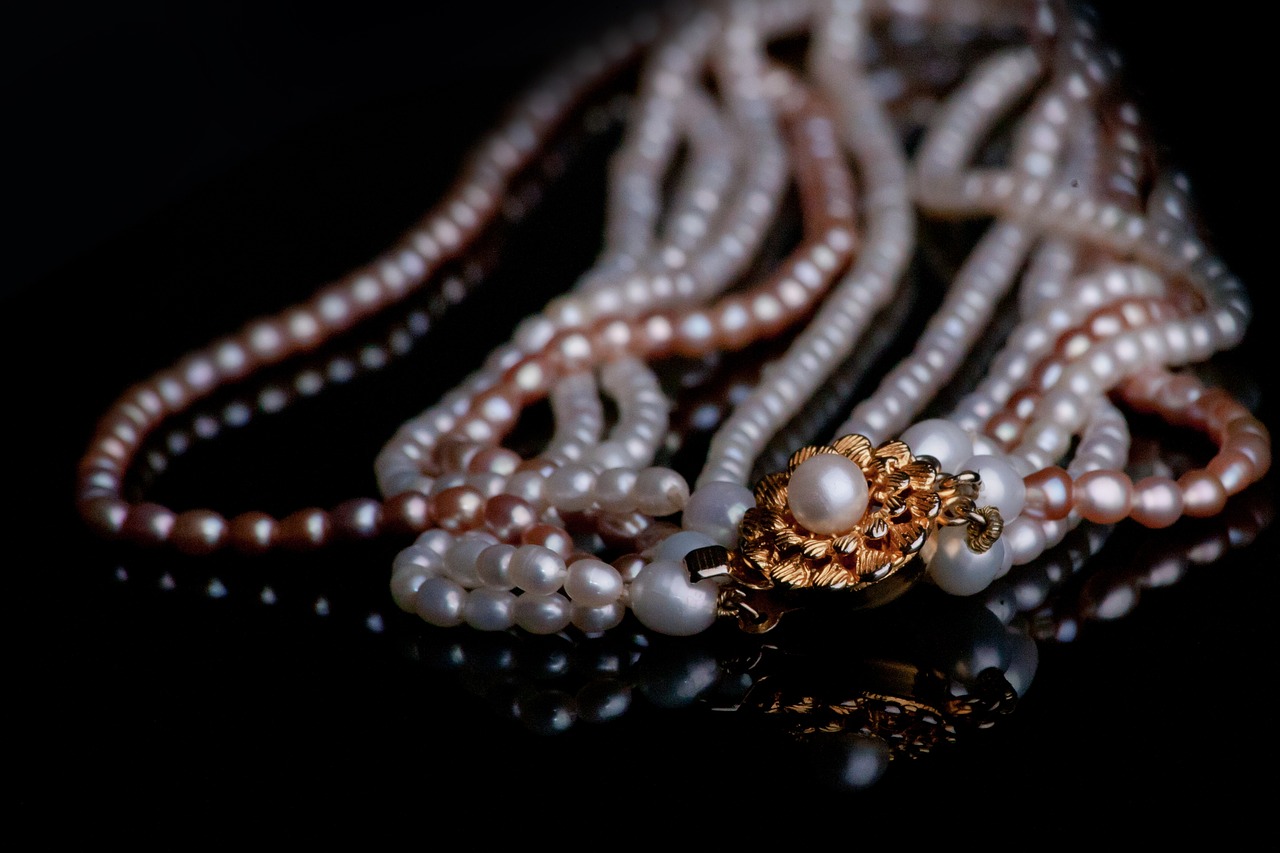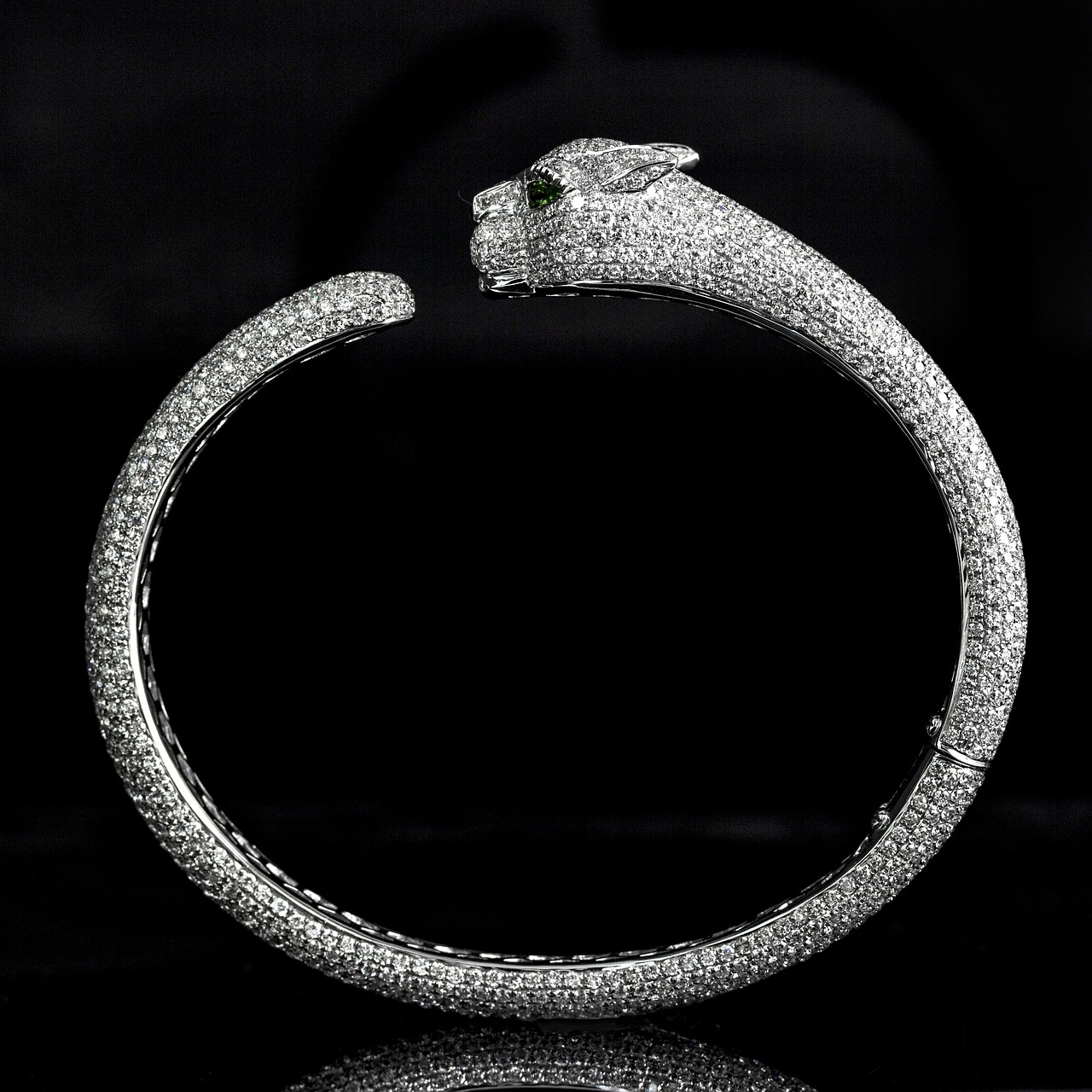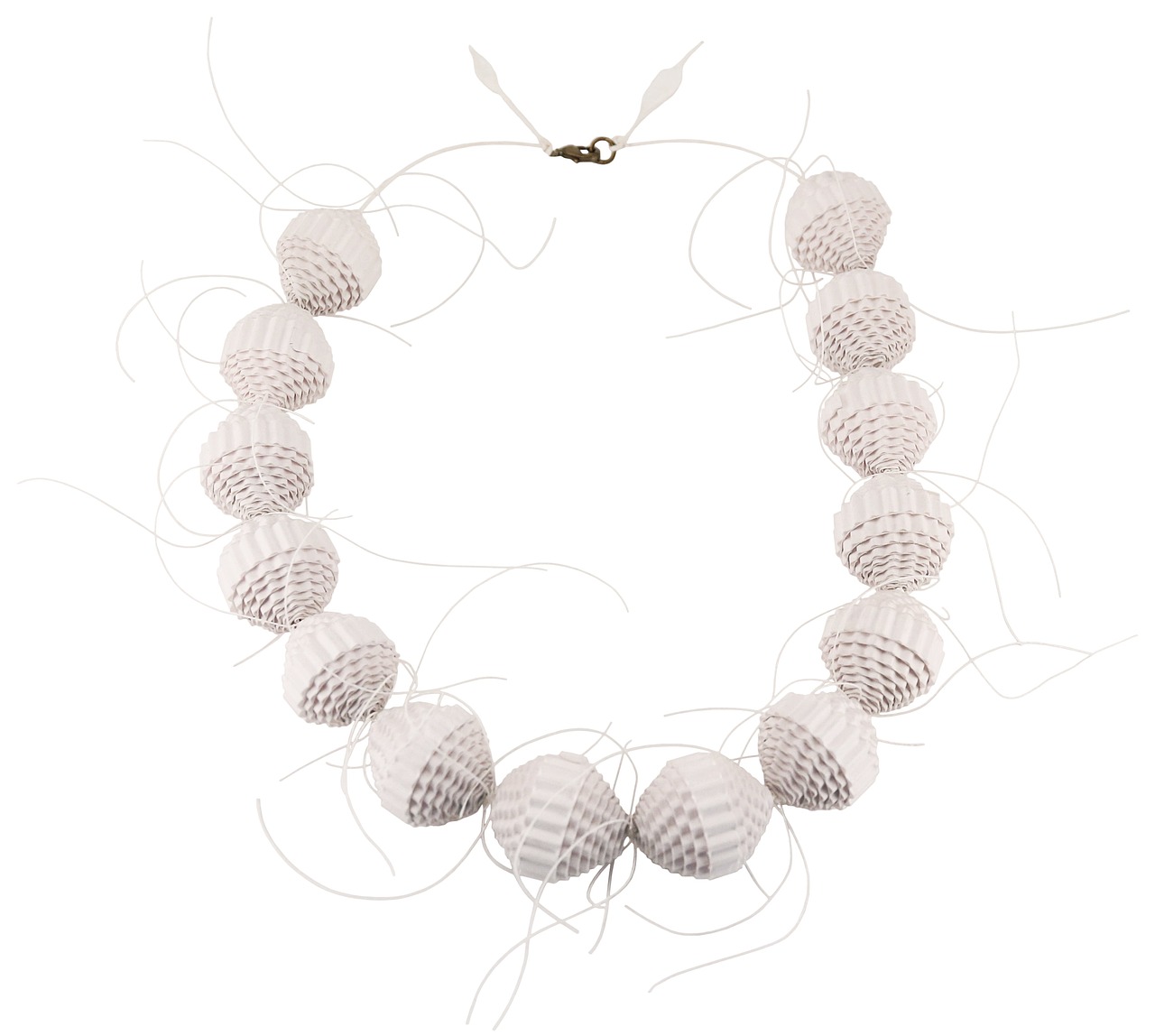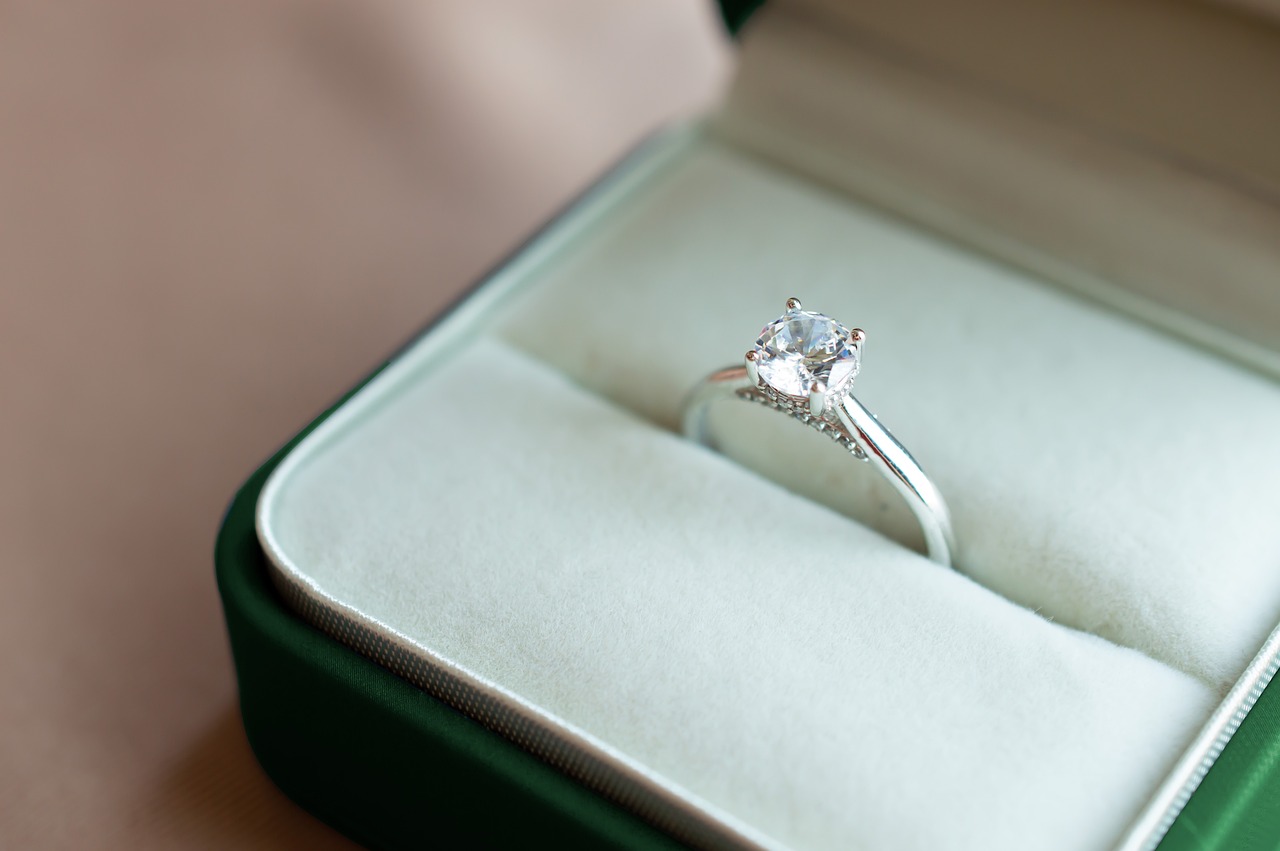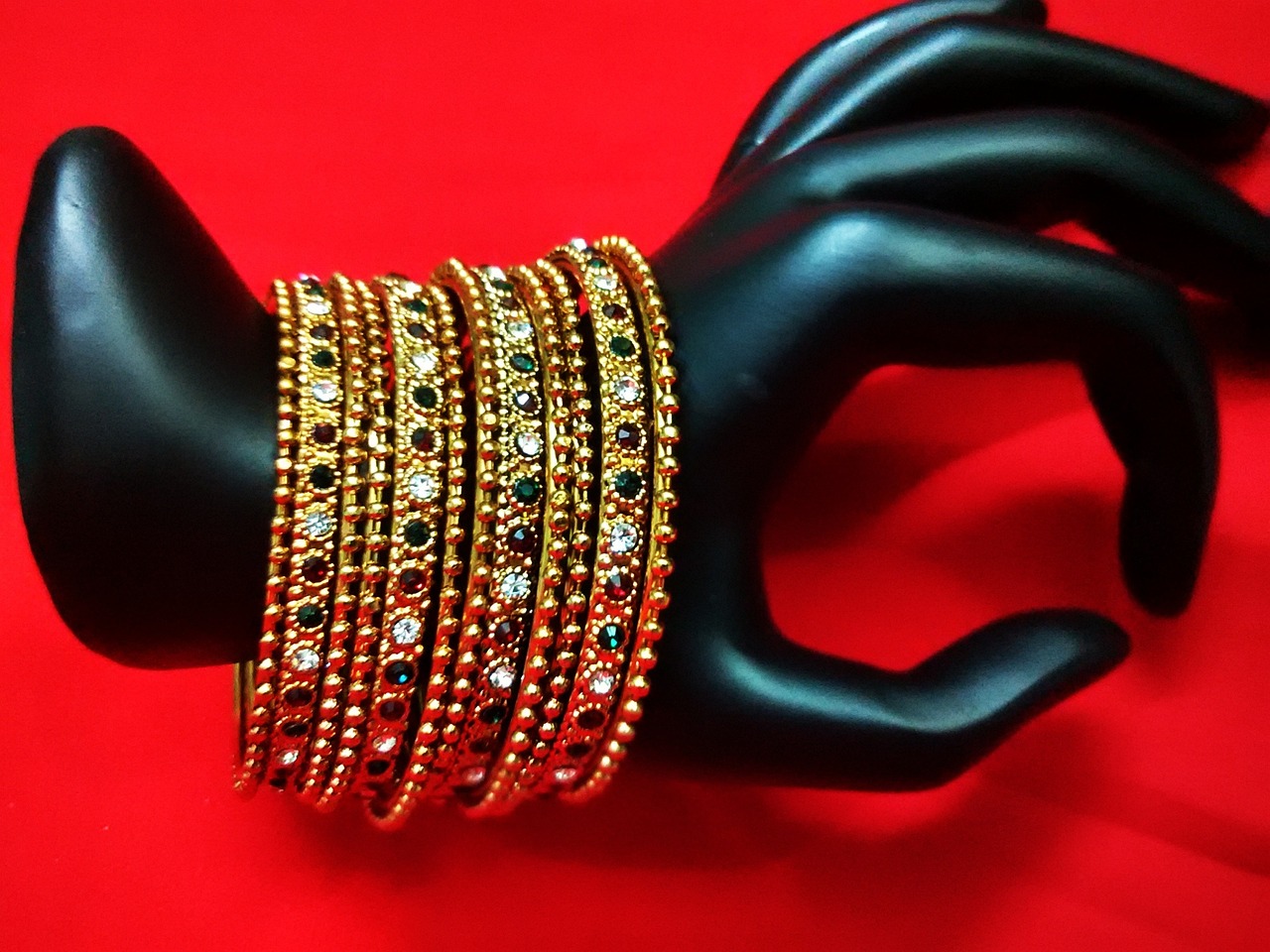The evolution of jewelry symbolism across cultures is a fascinating journey that reflects the values, beliefs, and traditions of societies throughout history. Jewelry has transcended mere adornment, serving as a powerful vehicle for expressing identity, status, and emotions. This article delves into the rich tapestry of jewelry symbolism, exploring its origins, cultural significance, and modern interpretations.
Jewelry symbolism encompasses the meanings and messages conveyed by various types of jewelry, which can differ significantly across cultures and historical contexts. These adornments often reflect beliefs, social status, and emotions, making them integral to understanding human expression in different eras.
The roots of jewelry symbolism can be traced back to ancient civilizations. Initially, jewelry served both decorative and functional roles, often symbolizing wealth, power, and protection from malevolent forces. Early adornments were crafted from natural materials, such as shells and stones, and were believed to hold protective qualities.
Throughout history, ancient civilizations, including the Egyptians and Greeks, utilized jewelry not only for personal adornment but also as amulets and symbols of divine favor. These pieces were often imbued with cultural significance, showcasing the beliefs and social hierarchies of their respective societies.
In ancient Egypt, jewelry was profoundly symbolic, often linked to the afterlife and the divine. Materials such as gold and lapis lazuli were favored for their association with the gods and the afterlife, conveying status and offering protection. Intricate designs, such as the ankh and scarab, were common, each representing different aspects of life and death.
Greek jewelry exemplified a fusion of artistry and symbolism. Often depicting mythological themes, these pieces served as offerings to deities and reflected the cultural values of the time. The use of precious metals and gemstones illustrated the Greeks’ appreciation for beauty and their belief in the divine.
During the Medieval and Renaissance periods, jewelry gained new meanings, often symbolizing love, fidelity, and social status. Intricate designs conveyed personal and political messages, with pieces like lockets and brooches serving as tokens of affection and allegiance.
Gemstones carry unique meanings and symbolism across cultures, often believed to possess specific powers that influence the wearer’s life. Each gemstone is associated with various attributes, enhancing its significance in jewelry.
Birthstones, linked to each month, are believed to bring luck, protection, and health to those born in that month. This personal connection to jewelry symbolism highlights the emotional ties individuals have with their adornments.
Many cultures ascribe healing properties to specific gemstones, impacting physical, emotional, and spiritual well-being. This belief enhances the symbolic value of gemstones in jewelry, making them more than just decorative items.
In contemporary society, jewelry symbolism has evolved to encompass personal expression, cultural identity, and social movements. Today, individuals use jewelry to reflect their beliefs and values, often transcending traditional meanings.
Many people today choose jewelry as a means of self-expression, selecting pieces that resonate with their personal stories and aesthetic preferences. This shift highlights the evolving nature of jewelry symbolism in a diverse world.
Modern jewelry often pays homage to cultural heritage, featuring designs that honor traditional craftsmanship. This connection fosters a sense of identity and continuity amidst globalization, allowing individuals to express their roots through adornment.
Jewelry plays a significant role in relationships, symbolizing love, commitment, and personal connections. Pieces like engagement rings and family heirlooms carry deep emotional weight, often representing shared history and values.
Engagement rings are powerful symbols of love and commitment, with their design and gemstone choices conveying unique messages about the relationship between partners. The tradition of giving an engagement ring has evolved, yet its significance remains profound.
Heirloom jewelry carries significant emotional and historical value, symbolizing family legacy and continuity. Often passed down through generations, these pieces help preserve memories and traditions, serving as tangible links to the past.
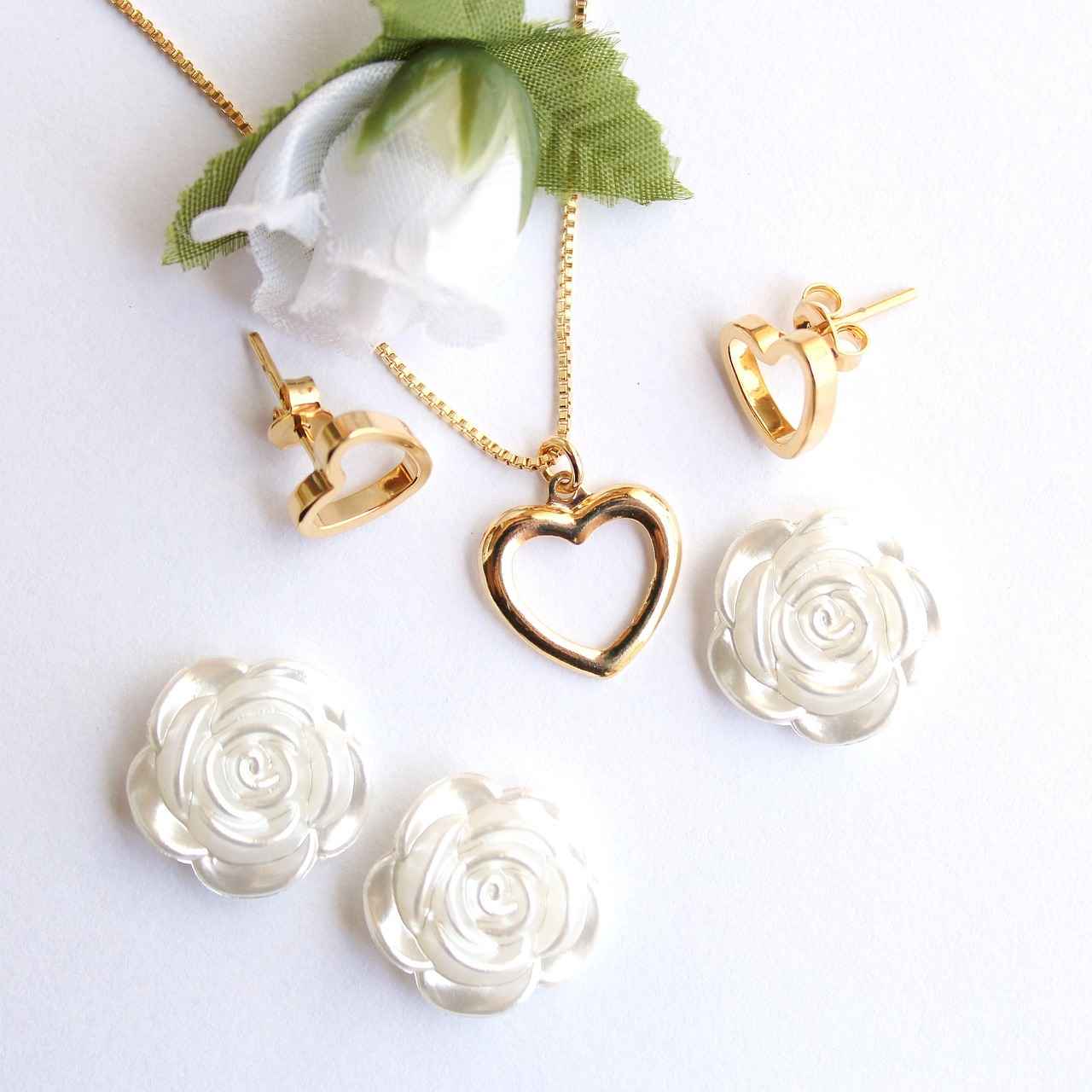
What is Jewelry Symbolism?
Jewelry has been an integral part of human culture for millennia, serving not only as decorative pieces but also as carriers of profound symbolism and meaning. Jewelry symbolism refers to the meanings and messages conveyed by different types of jewelry, which can vary widely across cultures and historical periods, reflecting beliefs, status, and emotions.
At its core, jewelry symbolism encompasses the various meanings attributed to jewelry pieces throughout history. These meanings can be influenced by cultural beliefs, societal norms, and personal experiences. For instance, a simple necklace might symbolize love or protection in one culture, while in another, it might represent wealth or status. This rich tapestry of meanings highlights the profound connection between jewelry and human expression.
The origins of jewelry symbolism can be traced back to ancient civilizations, where jewelry served both decorative and functional purposes. In many cultures, jewelry was seen as a form of protection against evil spirits or misfortune. For example, the ancient Egyptians adorned themselves with amulets that were believed to provide divine protection and favor.
From the Egyptians to the Greeks, ancient civilizations used jewelry not only for adornment but also as amulets and symbols of divine favor. Each piece was often intricately designed to reflect the beliefs and social structures of the time.
In ancient Egypt, jewelry was deeply symbolic, often associated with the afterlife and the gods. Materials like gold and lapis lazuli were used to convey status and protection. The famous scarab beetle, for example, was commonly used in jewelry as a symbol of rebirth and transformation.
Greek jewelry combined artistry with symbolism, often depicting mythological themes and serving as offerings to deities. The designs reflected the cultural values and aesthetics of the time, showcasing a blend of beauty and meaning.
During the Medieval and Renaissance periods, jewelry took on new meanings, often symbolizing love, fidelity, and social status. Intricate designs conveyed personal and political messages, with pieces like rings and brooches often serving as tokens of affection or allegiance.
Gemstones have unique meanings and symbolism across cultures, often believed to possess specific powers or attributes that can influence the wearer’s life and well-being. For instance, diamonds symbolize eternal love, while sapphires are associated with wisdom and nobility.
Each month is associated with a specific birthstone, believed to bring luck, protection, and health to those born in that month. This connection showcases the personal significance of jewelry symbolism, as individuals often wear their birthstones to reflect their identity.
Many cultures believe that certain gemstones possess healing properties, affecting physical, emotional, and spiritual well-being. For example, amethyst is often associated with tranquility and balance, enhancing its symbolic value in jewelry.
In contemporary society, jewelry symbolism has evolved to include personal expression, cultural identity, and social movements. Many people use jewelry as a means of self-expression, choosing pieces that resonate with their personal stories and beliefs.
Modern jewelry often reflects cultural heritage, with designs that honor traditional craftsmanship and symbolism. This fosters a sense of identity and continuity in a globalized world, allowing individuals to connect with their roots through their adornments.
Jewelry often plays a significant role in relationships, symbolizing love, commitment, and personal connections. Engagement rings, for example, are powerful symbols of love and commitment, with their design and gemstone choices conveying unique messages about the relationship between partners.
Heirloom jewelry carries significant emotional and historical value, symbolizing family legacy and continuity. Often passed down through generations, these pieces preserve memories and traditions, serving as tangible links to one’s ancestry.
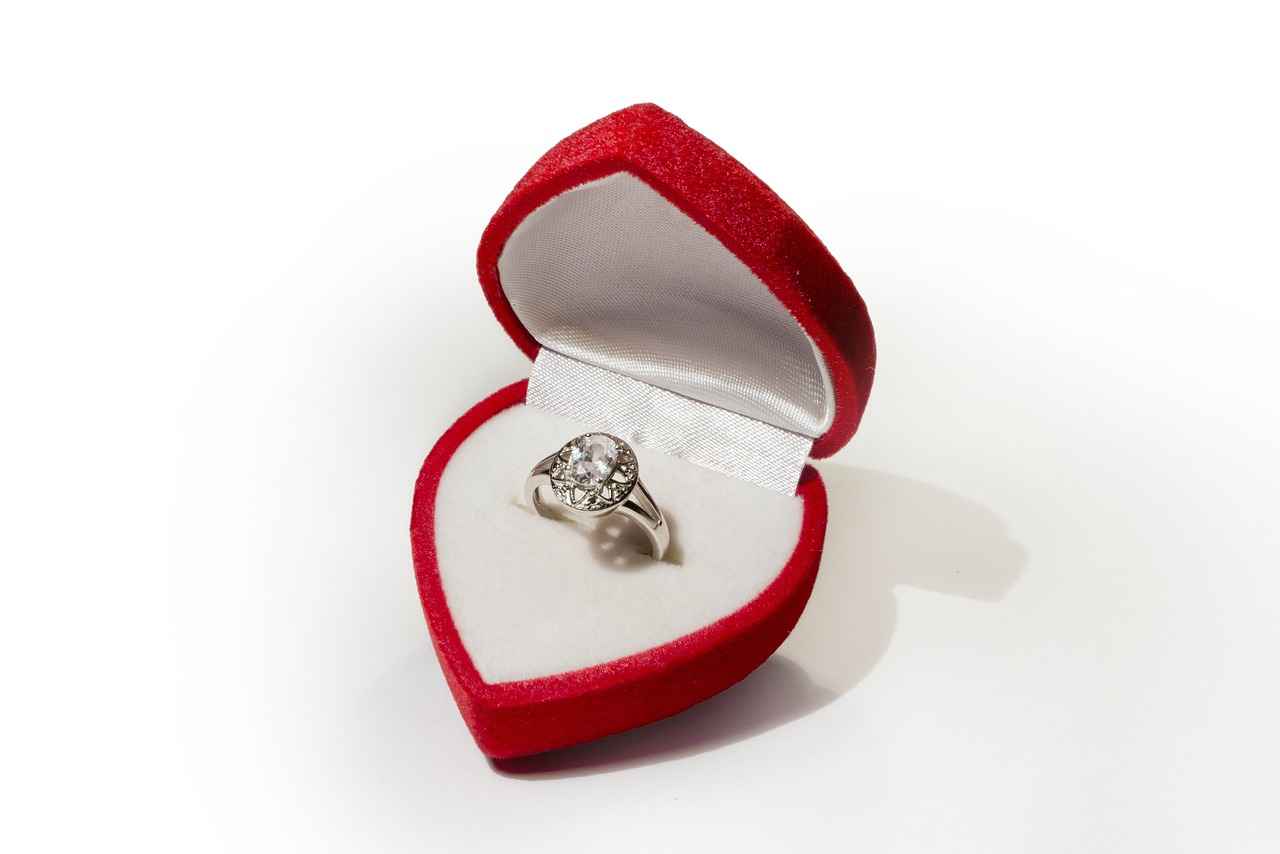
How Did Jewelry Symbolism Begin?
The origins of jewelry symbolism are deeply rooted in the practices of ancient civilizations, where jewelry was not merely an accessory but a vital part of cultural and spiritual life. From the earliest times, jewelry has served both decorative and functional purposes, often acting as a representation of wealth, power, and protection against malevolent forces.
In many ancient societies, jewelry was crafted from materials that were readily available, such as shells, stones, and metals. These items were often imbued with symbolic meanings, reflecting the beliefs and values of the culture. For instance, in ancient Egypt, jewelry was intricately designed to symbolize the divine and the afterlife. The use of gold and lapis lazuli was prevalent, as these materials were believed to provide protection and signify status among the living and the dead.
In addition to their aesthetic appeal, jewelry pieces often served as amulets or talismans, believed to possess mystical powers. For example, the ancient Greeks adorned themselves with jewelry that depicted mythological themes, reinforcing their connections to the gods and the cosmos. This practice was not only about beauty but also about expressing one’s faith and cultural identity.
As civilizations evolved, so did the meanings attributed to jewelry. During the Medieval and Renaissance periods, jewelry began to symbolize personal emotions and social status. Intricate designs emerged, often featuring motifs that conveyed messages of love, fidelity, and political allegiance. For instance, the use of gems in engagement rings became popular, with each stone carrying its own significance, reflecting the sentiments of the wearer.
Furthermore, the symbolism of jewelry is not confined to Western cultures. In various indigenous cultures around the world, jewelry has been used to signify tribal affiliation, social roles, and rites of passage. For example, Native American tribes often used jewelry made from turquoise and silver, which were believed to hold protective qualities and promote healing.
As we moved into the modern era, the significance of jewelry continued to evolve. Today, jewelry symbolism encompasses a wide range of meanings, from personal expression to cultural identity. People choose pieces that resonate with their individual stories and beliefs, often transcending traditional symbolism. For many, jewelry serves as a canvas for self-expression, allowing individuals to showcase their unique identities and values.
In conclusion, the journey of jewelry symbolism from ancient to modern times illustrates its profound impact on human culture and society. Jewelry has always been more than just decorative; it is a powerful medium through which individuals express their beliefs, emotions, and identities. As we explore the rich tapestry of jewelry symbolism, we gain insight into the shared human experience that transcends time and geography.
Ancient Civilizations and Their Jewelry
The Evolution of Jewelry Symbolism Across Cultures has a rich history that dates back thousands of years, with ancient civilizations using jewelry not only for adornment but also as potent symbols of their beliefs and social structures. This article delves into the intricate relationship between jewelry and culture, showcasing how these adornments have evolved over time and what they represented in various societies.
Jewelry served multiple purposes in ancient cultures, functioning as both decorative items and powerful amulets. It was often believed to hold supernatural powers, protecting the wearer from harm and bringing divine favor. The materials used, from precious metals to vibrant gemstones, were carefully selected not just for their beauty but also for their symbolic meanings.
In ancient Egypt, jewelry was a vital part of life, imbued with deep spiritual significance. The Egyptians crafted intricate pieces using gold, lapis lazuli, and other precious materials, which were often associated with the afterlife. For instance, scarabs symbolized rebirth and protection, while the Ankh represented eternal life. Jewelry was not merely ornamental; it was a means to communicate one’s social standing and connection to the divine.
The Greeks took jewelry to new artistic heights, often incorporating mythological themes into their designs. Pieces were created as offerings to the gods, reflecting the cultural values of the time. For example, jewelry adorned with goddess motifs was believed to invoke divine protection and favor. This blend of artistry and symbolism showcased the Greeks’ reverence for their mythology and the importance of jewelry in their daily lives.
As we move into the Roman era, jewelry evolved to become a clear indicator of wealth and social hierarchy. The use of gemstones became more prevalent, with each stone carrying its own significance. For example, emeralds were associated with fertility and rebirth, while rubies symbolized passion and protection. Romans often wore jewelry to display their status, with elaborate designs signifying power and influence.
During the Medieval period, jewelry began to take on new meanings, often symbolizing love and fidelity. The use of engagement rings became popular, with gemstones chosen for their personal significance. The intricate designs of the time often conveyed messages of devotion and commitment, reflecting the shifting values of society.
The Renaissance marked a rebirth of interest in classical themes, and jewelry reflected this cultural revival. Pieces were often adorned with religious symbols, showcasing the intertwining of faith and adornment. Jewelry became a means of personal expression, with designs that conveyed not just status but also individual beliefs and artistic tastes.
Throughout history, jewelry has played a crucial role in relationships, serving as a tangible representation of love and commitment. Engagement rings have become a universal symbol of promise, often chosen to reflect the unique bond between partners. Similarly, heirloom jewelry carries emotional weight, connecting generations and preserving family legacies.
In conclusion, the journey of jewelry symbolism from ancient civilizations to modern times reveals a fascinating interplay between culture, belief, and personal expression. Each piece tells a story, reflecting the values and aspirations of the society from which it originates. Understanding this evolution not only enriches our appreciation of jewelry but also deepens our connection to the cultures that shaped these beautiful adornments.
Egyptian Jewelry and Its Significance
Jewelry has always played a pivotal role in human culture, serving as a form of expression, status, and spiritual connection. Among the ancient civilizations, Egyptian jewelry stands out for its intricate craftsmanship and profound symbolism. This article delves into the significance of jewelry in ancient Egypt, exploring its materials, designs, and the beliefs that shaped its use.
In ancient Egypt, jewelry was not merely decorative; it was a reflection of the wearer’s status and beliefs. The materials used were often rich and luxurious, including:
- Gold: Revered for its luster and durability, gold symbolized the divine and was associated with the gods, particularly Ra, the sun god.
- Lapis Lazuli: This deep blue stone was highly prized, representing the heavens and believed to offer protection and spiritual insight.
- Turquoise: Often used in amulets, turquoise was thought to bring good fortune and health.
- Silver: Although less common, silver was also used and was associated with the moon and femininity.
Jewelry in ancient Egypt was a powerful indicator of social status. The wealthy adorned themselves with elaborate pieces that showcased their riches. Common designs included:
- Necklaces: Often layered, featuring intricate designs and precious stones, they were worn by both men and women.
- Bracelets: These were commonly worn and symbolized protection and strength.
- Rings: Used for both adornment and as seals, rings held significant power in social and legal matters.
In ancient Egyptian culture, the afterlife was a central belief, and jewelry played a crucial role in ensuring safe passage and protection. It was common for the deceased to be buried with their most treasured pieces, including:
- Amulets: Believed to provide protection against evil spirits, amulets were often inscribed with spells and symbols.
- Funerary Masks: Made of gold and adorned with jewels, these masks were designed to preserve the identity of the deceased in the afterlife.
The designs of Egyptian jewelry were rich in symbolism, often reflecting the wearer’s beliefs and aspirations. Common motifs included:
- Scarabs: Symbolizing rebirth and transformation, scarab beetles were frequently incorporated into jewelry.
- Lotus Flowers: Representing purity and creation, lotus motifs were prevalent in necklaces and earrings.
- Eye of Horus: A symbol of protection, the Eye of Horus was often featured in amulets and rings.
The legacy of ancient Egyptian jewelry continues to inspire modern designs and cultural expressions. Today, many jewelers incorporate traditional elements into contemporary pieces, allowing people to connect with their heritage. The symbolism and artistry of Egyptian jewelry serve as a reminder of the deep-rooted significance of adornment throughout history.
In summary, Egyptian jewelry was much more than mere decoration; it was a profound expression of cultural identity, spirituality, and social hierarchy. The materials, designs, and symbolism reflect a civilization that valued beauty, status, and the afterlife, leaving a lasting impact on the world of jewelry that resonates even today.
Greek Jewelry: A Blend of Art and Symbolism
Greek jewelry is a remarkable fusion of artistry and symbolism, reflecting the rich cultural heritage and aesthetic values of ancient Greece. From intricate gold necklaces to ornate bracelets, each piece tells a story that transcends time, often intertwined with mythological themes and religious significance.
The uniqueness of Greek jewelry lies in its meticulous craftsmanship and the deep meanings embedded within the designs. Artisans employed various techniques, such as filigree, granulation, and casting, to create stunning pieces that were not just decorative but also served as symbols of wealth, status, and piety.
Jewelry in ancient Greece often depicted mythological figures and motifs, such as gods, goddesses, and mythical creatures. These designs served multiple purposes: they were not only personal adornments but also offerings to deities, reflecting the wearer’s devotion and aspirations. For instance, a necklace featuring the goddess Athena might symbolize wisdom and protection, while a ring adorned with a griffin could represent strength and vigilance.
Many pieces of Greek jewelry were created as offerings to the gods, often found in temples or burial sites. Such items were believed to carry the wearer’s prayers and wishes to the divine. The use of precious materials like gold, silver, and gemstones was not merely for aesthetic appeal but also signified the importance of the offering. For example, gold was associated with the sun and immortality, making it a favored choice for religious artifacts.
In ancient Greece, jewelry was a clear indicator of social status. Wealthy individuals adorned themselves with elaborate pieces, showcasing their affluence and taste. Women, in particular, wore jewelry to enhance their beauty and display their family’s wealth. Common items included earrings, brooches, and diadems, often embellished with intricate designs and precious stones.
The impact of Greek jewelry extends beyond its own time, influencing various cultures throughout history. The Renaissance period saw a revival of classical themes, with jewelers drawing inspiration from ancient Greek designs. The symbolism and artistry of Greek jewelry continue to inspire contemporary designers, with many modern pieces echoing the elegance and meaning of their ancient counterparts.
Today, Greek jewelry is celebrated not only for its beauty but also for its rich historical significance. Museums around the world showcase these artifacts, allowing visitors to appreciate the artistry and cultural context. Additionally, modern jewelers often incorporate Greek themes into their work, creating pieces that resonate with both tradition and contemporary aesthetics.
In conclusion, Greek jewelry stands as a testament to the artistic prowess and cultural depth of ancient Greece. Its blend of artistry, symbolism, and historical significance continues to captivate and inspire, reminding us of the timeless connection between adornment and meaning.
Medieval and Renaissance Jewelry Symbolism
During the Medieval and Renaissance periods, the world of jewelry experienced a profound transformation, evolving into a powerful medium for expressing emotions, status, and political alliances. This era saw a rich tapestry of intricate designs and meaningful symbols that conveyed messages far beyond mere adornment.
In the Medieval period, jewelry was often a reflection of social hierarchy. Nobles and royals adorned themselves with elaborate pieces that showcased their wealth and power. Gold and precious gemstones were commonly used, with each piece carefully crafted to signify the wearer’s status. For instance, rings adorned with family crests served as a means of identification and a statement of lineage.
The Renaissance brought about a renewed interest in art and culture, which was reflected in the jewelry of the time. Pieces became more intricate, featuring nature-inspired designs and mythological themes. This period also saw the rise of sentimental jewelry, where pieces were crafted to symbolize love and fidelity. One notable example is the posy ring, which often bore engraved messages of affection.
Jewelry also played a crucial role in political alliances. Marriages among nobility were often arranged to strengthen ties between families or nations. As a result, wedding bands and other pieces were imbued with significant meaning, representing not just personal bonds but also political power. The use of specific gemstones, such as diamonds and sapphires, was believed to enhance the strength of these alliances.
During these periods, jewelry also held religious significance. Many pieces were designed with Christian symbols, such as crosses and saints, serving as reminders of faith and divine protection. Such adornments were not only personal but also public declarations of one’s beliefs, further intertwining jewelry with the cultural fabric of the time.
Each gemstone carried its own symbolic meaning. For example, emeralds were associated with fidelity and rebirth, while rubies symbolized passion and courage. The choice of gemstones in jewelry was often deliberate, reflecting the wearer’s aspirations and emotions.
The intricate designs and profound meanings of jewelry from the Medieval and Renaissance periods continue to influence contemporary jewelry design. Today, many pieces still embody the same values of love, fidelity, and social status, albeit in modern interpretations. The legacy of these historical periods remains evident in the way we view and wear jewelry today.
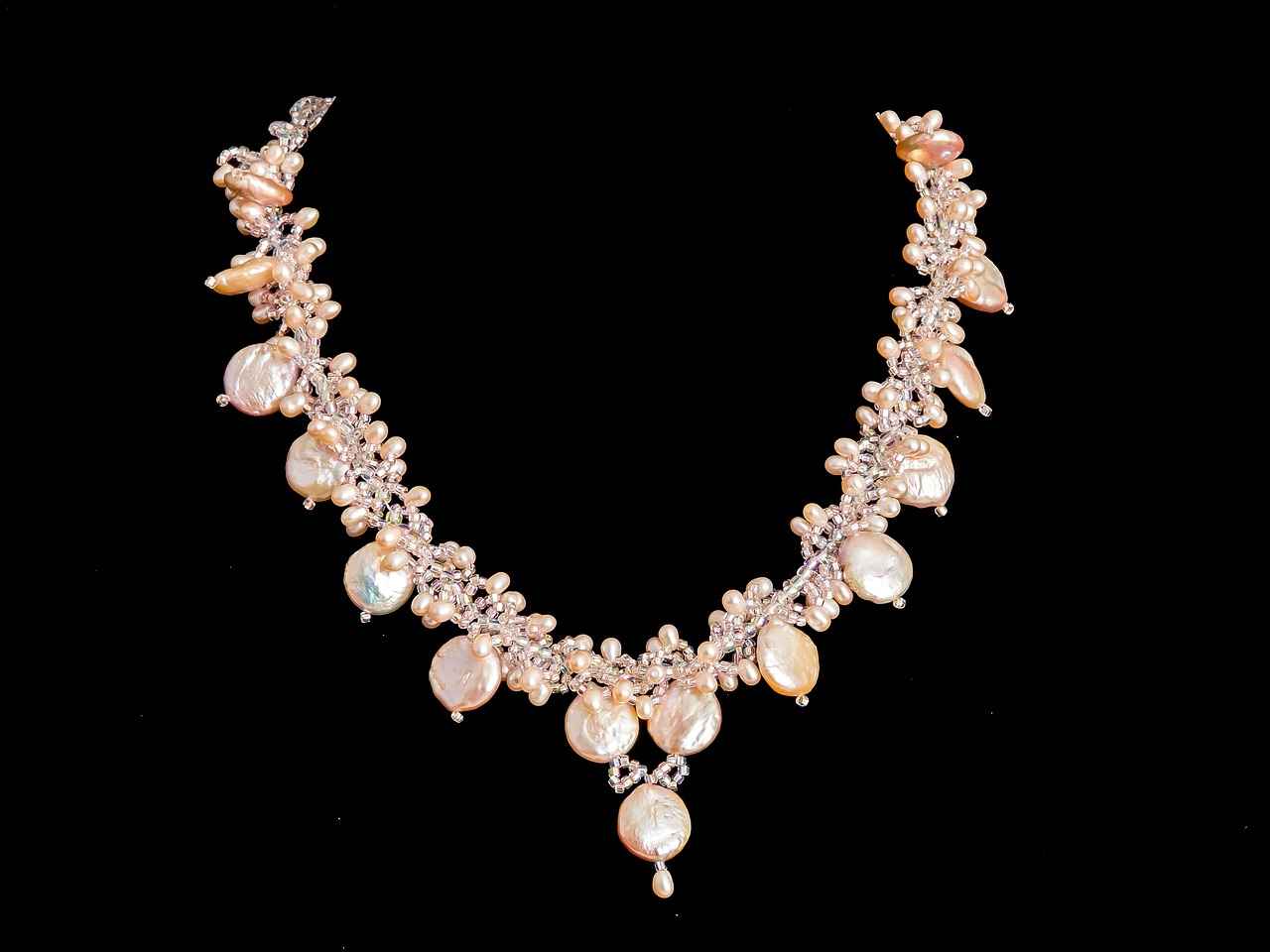
What Do Different Gemstones Represent?
Gemstones have captivated humanity for centuries, not only for their beauty but also for their profound meanings and symbolism across various cultures. Each gemstone is believed to carry unique attributes, often thought to influence the wearer’s life and enhance their well-being. As we explore the significance of different gemstones, we uncover a rich tapestry of beliefs that reflect the values and traditions of diverse societies.
Jewelry made from gemstones is more than just an accessory; it serves as a powerful symbol of personal identity, cultural heritage, and emotional connections. The meanings attributed to gemstones can vary widely, shaped by historical context, mythology, and cultural practices.
- Diamond: Known as the stone of commitment, diamonds symbolize eternal love and strength. Often used in engagement rings, they are believed to bring clarity and harmony.
- Ruby: This vibrant red gemstone is associated with passion and vitality. Rubies are thought to inspire courage and boost energy, making them a favored choice for those seeking to enhance their emotional well-being.
- Sapphire: Traditionally linked to wisdom and royalty, sapphires are believed to promote mental clarity and self-discipline. They are often worn by leaders and those in positions of authority.
- Emerald: Revered for its lush green hue, emeralds symbolize rebirth and love. They are thought to bring harmony and balance to relationships, making them a popular choice for couples.
- Amethyst: Known for its calming properties, amethyst is believed to promote spiritual growth and tranquility. It is often used in meditation practices to enhance focus and clarity.
- Aquamarine: This serene blue gemstone is associated with calmness and clarity. It is believed to soothe fears and promote clear communication, making it a favorite among those seeking peace.
Each month of the year is associated with a specific gemstone, known as a birthstone. These stones are believed to bring luck, protection, and health to those born in that month. For example, January’s garnet is thought to symbolize loyalty and friendship, while July’s ruby represents passion and love. The cultural significance of birthstones varies, often reflecting local traditions and beliefs.
Many cultures embrace the idea that gemstones possess healing properties that can affect physical, emotional, and spiritual well-being. For instance, some believe that wearing a rose quartz can help mend a broken heart, while lapis lazuli is thought to enhance self-awareness and inner truth. This belief in the healing power of gemstones adds another layer of meaning to their use in jewelry.
In contemporary society, the symbolism of gemstones has evolved, often reflecting personal expression and cultural identity. Many individuals choose gemstones that resonate with their personal stories or values, transcending traditional meanings. For example, a person may select a gemstone based on its color or aesthetic appeal rather than its historical significance.
As we navigate the intricate world of gemstones, it becomes clear that their meanings are deeply rooted in human experience. Whether worn for their beauty or their believed powers, gemstones continue to hold a special place in our hearts and cultures, serving as a testament to our enduring connection to the natural world.
Birthstones and Their Cultural Significance
Birthstones hold a special place in the world of jewelry, intertwining personal identity with cultural significance. Each month is represented by a unique gemstone, believed to bestow luck, protection, and health upon those born during that time. This connection between individuals and their birthstones highlights the deep-rooted symbolism of jewelry across various cultures.
Birthstones are gemstones that correspond to each month of the year, each carrying its own unique set of meanings and attributes. For centuries, they have been associated with various myths and legends, believed to enhance the well-being of the wearer. The tradition of wearing birthstones dates back to ancient civilizations, including the Babylonians, who are thought to have created the first list of birthstones around 600 B.C.
Many cultures believe that wearing one’s birthstone can bring good fortune and serve as a protective talisman. For example, the ruby, associated with July, is said to symbolize passion and vitality, while the amethyst, linked to February, is thought to promote calmness and clarity. This belief in gemstones’ protective qualities is deeply embedded in various traditions:
- Jewish Tradition: The biblical Book of Exodus mentions the twelve stones on the High Priest’s breastplate, each representing a tribe of Israel, similar to the concept of birthstones.
- Hindu Culture: In Hinduism, gemstones are believed to have astrological significance, influencing a person’s fate and fortune based on their birth month.
Beyond luck and protection, many believe that birthstones possess healing properties that can positively impact physical and emotional health. For instance:
- The emerald, associated with May, is thought to promote healing and rejuvenation.
- The sapphire, linked to September, is believed to enhance mental clarity and wisdom.
These associations have been passed down through generations, often leading individuals to choose birthstones not only for their aesthetic appeal but also for their perceived benefits.
In today’s world, birthstones have transcended their traditional meanings, evolving into symbols of personal identity and self-expression. Many individuals choose to wear their birthstones as a form of jewelry that reflects their personality and life experiences. This modern interpretation emphasizes the emotional connection people have with their birthstones:
- Custom jewelry designs often incorporate birthstones, allowing individuals to create unique pieces that tell their personal stories.
- Birthstones are commonly gifted during significant life events, such as birthdays, anniversaries, and graduations, symbolizing love and support.
Birthstones play a significant role in various cultural contexts, often symbolizing more than just a personal connection. They can represent family heritage, cultural identity, and even societal values. For example:
- In some cultures, birthstones are believed to align with the zodiac signs, further intertwining astrology with personal identity.
- Jewelry featuring birthstones is often passed down through generations, creating a sense of continuity and familial bonds.
In conclusion, birthstones are more than mere gemstones; they embody a rich tapestry of cultural significance, personal identity, and emotional connections. As people continue to embrace the symbolism of birthstones, they not only celebrate their own identities but also honor the traditions that have shaped our understanding of these precious stones over the centuries.
Healing Properties of Gemstones
Throughout history, gemstones have captivated human imagination, not only for their aesthetic beauty but also for their perceived healing properties. Many cultures, from ancient civilizations to modern societies, have believed that these natural treasures possess the ability to influence physical, emotional, and spiritual well-being. This belief has significantly enhanced the symbolic value of gemstones in jewelry, making them more than mere adornments.
Gemstones are often thought to carry unique energies and vibrations that can promote healing and balance in the wearer’s life. Each stone is believed to have its own specific attributes and benefits:
- Amethyst: Known for its calming properties, amethyst is said to help alleviate stress and anxiety, promoting emotional stability.
- Rose Quartz: Often referred to as the stone of love, rose quartz is believed to enhance feelings of compassion, peace, and emotional healing.
- Lapis Lazuli: This deep blue stone is associated with wisdom and self-awareness, often used to encourage self-expression and clarity of thought.
- Citrine: Known as the stone of abundance, citrine is believed to attract prosperity and success while also boosting self-confidence.
The perception of gemstones and their healing properties varies across cultures. For instance, in traditional Chinese medicine, certain gems are used in conjunction with acupuncture and herbal remedies to restore balance in the body’s energy flow, or Qi. Similarly, in Indian Ayurvedic practices, gemstones are often prescribed based on an individual’s astrological chart, believed to enhance specific traits and mitigate negative influences.
In contemporary society, the fascination with gemstone healing has surged, with many individuals seeking alternative therapies to complement traditional medicine. Crystal healing, a practice that involves placing stones on various parts of the body, is gaining popularity as people explore holistic approaches to wellness. Advocates claim that the vibrational energy of gemstones can help to:
- Reduce physical pain and discomfort.
- Enhance mental clarity and focus.
- Promote emotional healing and resilience.
While many people swear by the benefits of gemstones, scientific evidence supporting their healing properties is limited. Most claims are anecdotal, and the effectiveness of gemstone healing is often attributed to the placebo effect. However, the psychological benefits of wearing gemstones, such as increased self-esteem and a sense of empowerment, are well documented. The act of believing in the power of a gemstone can lead to positive changes in one’s mindset and emotional state.
Incorporating gemstones into daily life can be a meaningful way to enhance well-being. Here are some practical tips:
- Wear gemstone jewelry: Choose pieces that resonate with your personal goals or emotional needs.
- Create a crystal grid: Arrange stones in specific patterns to amplify their energies for healing or manifestation.
- Use gemstones in meditation: Hold or place stones around your meditation space to deepen your practice and enhance focus.
In summary, the healing properties of gemstones are a fascinating intersection of culture, belief, and personal experience. While scientific validation may be limited, the emotional and psychological benefits derived from these natural stones are undeniable, making them valuable components of jewelry with profound symbolic significance.

Modern Interpretations of Jewelry Symbolism
Jewelry has long served as a means of personal expression and cultural representation, but in today’s world, its symbolism has taken on a new dimension. As society evolves, so too does the meaning behind the adornments we choose to wear. This article delves into the , examining how these pieces reflect individual beliefs, cultural identities, and social movements.
In the past, jewelry was primarily associated with status, wealth, and tradition. However, in contemporary society, the focus has shifted towards personal expression and individuality. People are now more inclined to choose jewelry that resonates with their unique experiences and values, rather than merely adhering to societal norms or expectations.
Today, many individuals use jewelry as a canvas for self-expression. Whether it’s a handcrafted piece from a local artisan or a statement necklace from a global brand, these adornments allow wearers to showcase their personal stories. For instance, some may choose pieces that reflect their cultural heritage, while others might opt for designs that symbolize their passions or beliefs.
Jewelry often serves as a reflection of cultural identity. In a globalized world, many people seek to connect with their roots through traditional jewelry. This can include wearing pieces that feature specific materials, designs, or techniques unique to their culture. For example, Indigenous jewelry often incorporates symbols and designs that tell stories of ancestry and tradition, fostering a sense of belonging and identity.
Jewelry has also become a powerful tool for advocacy and social movements. Many individuals wear pieces that symbolize their support for various causes, such as environmentalism, gender equality, and social justice. For instance, the use of recycled materials in jewelry design can reflect a commitment to sustainability, while certain symbols may be used to raise awareness about pressing social issues.
Personal beliefs significantly influence the types of jewelry individuals choose to wear. Many people select pieces that align with their spiritual or philosophical beliefs. For example, some may wear crystals or gemstones believed to possess healing properties, while others might choose symbols that resonate with their faith. This connection between jewelry and personal belief adds a layer of meaning, making each piece more than just an accessory.
Jewelry has always played a significant role in relationships, often symbolizing love, commitment, and personal connections. Engagement rings, for example, are powerful symbols of love and commitment, with their design and gemstone choices conveying unique messages about the relationship between partners. Additionally, heirloom pieces passed down through generations carry emotional weight, symbolizing family legacy and continuity.
As we look to the future, the symbolism of jewelry will likely continue to evolve. With the rise of technology and digital art, we may see even more innovative ways for individuals to express their identities through jewelry. Whether through customizable pieces or virtual reality designs, the possibilities are endless. Ultimately, the evolution of jewelry symbolism reflects our changing society, highlighting the importance of personal expression and cultural representation in a diverse world.
Jewelry as a Form of Self-Expression
Jewelry has long been more than just decorative adornment; it serves as a profound means of self-expression. In today’s world, individuals are increasingly drawn to unique pieces that resonate with their personal narratives, beliefs, and aesthetic preferences. This evolution transcends traditional symbolism, allowing jewelry to reflect the diverse identities and experiences of wearers.
Jewelry acts as a visual language, communicating messages about the wearer’s personality, values, and life experiences. Each piece can tell a story, whether it’s a family heirloom passed down through generations or a contemporary design that embodies a personal milestone. The choice of materials, colors, and styles can signify various aspects of one’s identity, making jewelry a powerful tool for self-representation.
The selection process for jewelry often involves deep personal reflection. Many individuals seek pieces that align with their values or resonate with significant life events. For instance:
- Symbolic Meaning: Some may choose pieces that symbolize love, friendship, or resilience, reflecting their emotional journey.
- Artistic Expression: Others might favor avant-garde designs that showcase their artistic sensibilities and unique taste.
- Cultural Significance: Jewelry that honors cultural heritage can foster a sense of belonging and pride in one’s roots.
Customization has become a popular trend in the jewelry industry, allowing individuals to create pieces that are truly one-of-a-kind. Custom jewelry can incorporate specific gemstones, engravings, or designs that hold personal significance. This level of personalization not only enhances the emotional value of the piece but also ensures that it aligns perfectly with the wearer’s identity and story.
Jewelry has also become a medium for social expression. Many individuals use their adornments to advocate for causes they believe in, such as sustainability, equality, or mental health awareness. For example, brands that focus on ethically sourced materials resonate with consumers who prioritize environmental responsibility. Wearing such pieces can serve as a conversation starter, allowing wearers to express their commitment to these important issues.
Beyond aesthetic appeal, wearing jewelry that holds personal significance can have psychological benefits. It can serve as a source of comfort during challenging times, reminding individuals of their strength and resilience. Additionally, the act of choosing and wearing meaningful jewelry can boost self-esteem and confidence, reinforcing a positive self-image.
As individuals evolve, so too can their jewelry choices. Many people find that their tastes shift alongside their personal growth, leading them to select pieces that better align with their current selves. This transformation can be reflected in:
- Changing Styles: What once felt appropriate may no longer resonate, prompting a shift to new styles that reflect current interests.
- New Symbolism: As life experiences accumulate, the meanings attached to certain pieces may change, leading to a reevaluation of what jewelry represents.
In conclusion, jewelry has become a vital form of self-expression in modern society. By choosing pieces that resonate with personal stories, beliefs, and aesthetics, individuals can communicate their identities in a meaningful way. As the landscape of jewelry continues to evolve, it will undoubtedly remain a significant aspect of personal expression and cultural identity.
Cultural Heritage and Jewelry
Jewelry has always held a significant place in human culture, serving not just as adornment but as a profound expression of identity and heritage. In a world where globalization often blurs cultural lines, modern jewelry increasingly reflects cultural heritage, with designs that honor traditional craftsmanship and symbolism. This fusion of old and new fosters a deep sense of identity and continuity.
Cultural heritage in jewelry is vital as it preserves the unique stories, traditions, and values of diverse communities. By incorporating traditional elements into contemporary designs, artisans create pieces that resonate with both the past and the present. This practice not only celebrates individuality but also promotes cultural awareness and appreciation.
Many modern jewelers draw inspiration from ancient techniques, employing methods passed down through generations. These traditional skills include handcrafting, engraving, and stone setting, which add authenticity and depth to the pieces. For instance, the intricate filigree work seen in Mediterranean jewelry is now being adapted into modern pieces, allowing wearers to connect with their roots.
Jewelry often carries rich symbolism, with each piece telling a story or representing a specific belief. For example, Native American jewelry frequently incorporates symbols of nature, such as feathers and animals, which signify a connection to the earth. Similarly, Asian designs may feature motifs that represent luck, prosperity, and harmony, reflecting the values of their cultures.
In today’s globalized society, wearing jewelry that reflects one’s cultural heritage can be a powerful statement of identity. It allows individuals to showcase their background and beliefs, creating a sense of belonging. For many, these pieces serve as a reminder of their ancestry, bridging the gap between generations.
Cultural events often feature traditional jewelry as a means of celebration. For example, during weddings, brides may wear heirloom pieces that have been passed down through their families, symbolizing continuity and connection. Festivals also provide opportunities for individuals to don jewelry that represents their cultural narratives, reinforcing community bonds.
By embracing traditional designs and techniques, modern jewelry can promote cultural sustainability. Artisans who prioritize ethical sourcing and craftsmanship can help preserve endangered cultural practices while providing economic opportunities for their communities. This approach not only honors heritage but also ensures that these traditions are not lost to time.
As we move forward, the fusion of traditional and contemporary styles is likely to continue shaping the jewelry landscape. Consumers are increasingly seeking pieces that tell a story and reflect their values, leading to a demand for jewelry that honors cultural heritage. This trend not only supports artisans but also fosters a greater understanding of diverse cultures in our interconnected world.
In conclusion, modern jewelry serves as a canvas for cultural heritage, blending traditional craftsmanship with contemporary design. By honoring the past and celebrating identity, these adornments play a vital role in fostering a sense of belonging in a globalized society.
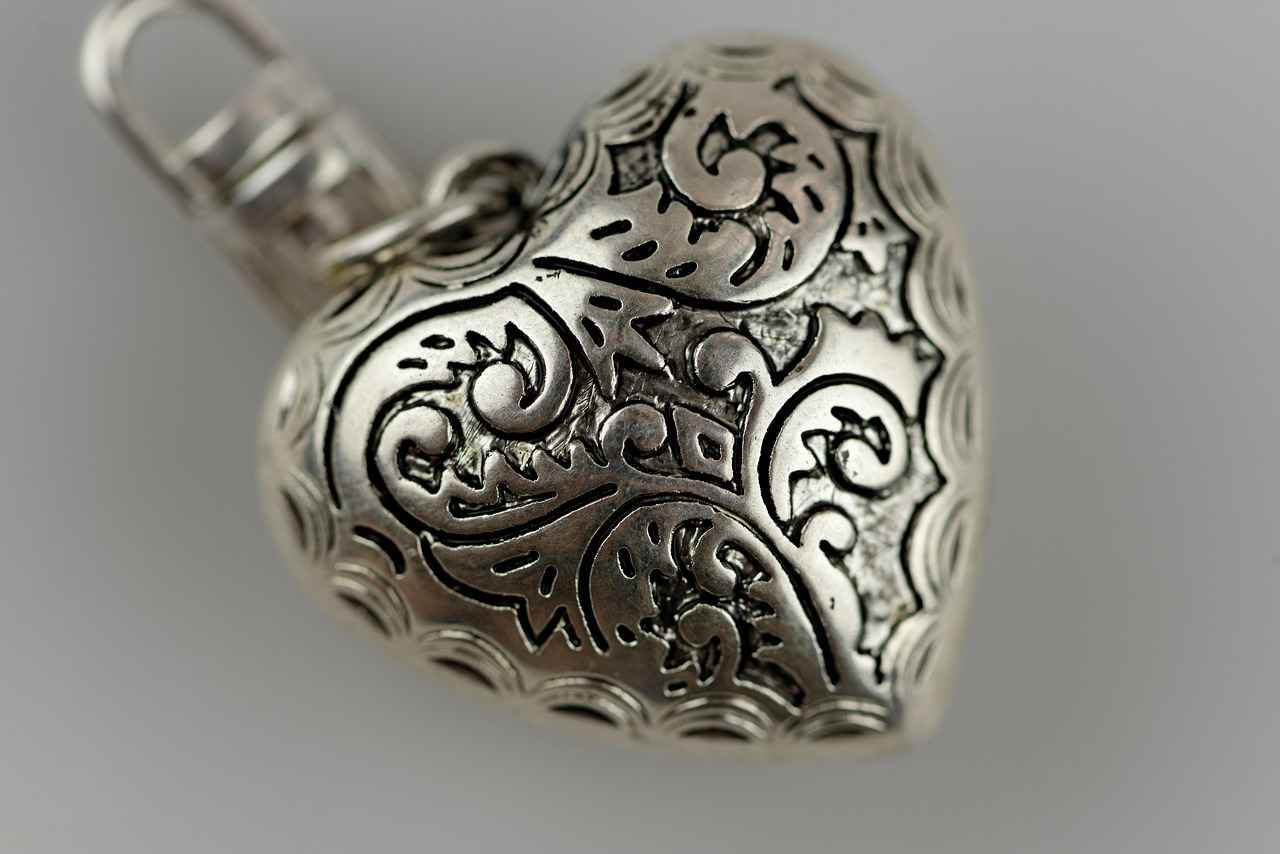
How Does Jewelry Symbolism Impact Relationships?
Jewelry has long been intertwined with the fabric of human relationships, serving as a vital symbol of love, commitment, and emotional bonds. From ancient times to modern society, the significance of jewelry has evolved, yet its core essence remains rooted in its ability to convey deep feelings and connections.
Jewelry often acts as a tangible representation of significant milestones in relationships. Whether it’s a gift for a special occasion or a memento of shared experiences, each piece tells a story. This is especially true for engagement rings, which symbolize a promise of love and commitment. The choice of design, metal, and gemstone can reflect the couple’s unique journey, making the ring a personal emblem of their bond.
Engagement rings are perhaps the most recognized form of jewelry that signifies love. Traditionally, these rings feature a diamond, symbolizing eternity and unbreakable bonds. The practice of giving an engagement ring dates back to ancient civilizations, where it was believed to represent a woman’s ownership and commitment. Today, however, the focus has shifted to represent mutual love and partnership.
Heirloom jewelry carries profound emotional significance, often passed down through generations. Each piece is steeped in family history, embodying the stories of those who wore it before. Heirlooms not only serve as beautiful adornments but also as a means of preserving memories and traditions within families. They remind us of our roots and the bonds that tie us to our ancestors.
Across various cultures, jewelry serves as a universal language of love and commitment. For instance, in Indian culture, wedding jewelry is an integral part of the marriage ceremony, often symbolizing prosperity and good fortune for the couple. In contrast, in Western cultures, the engagement ring holds the most significance, marking the transition into a committed partnership.
In modern relationships, jewelry has also become a form of personal expression. Couples often choose pieces that resonate with their personalities and shared experiences. Custom-made jewelry allows individuals to incorporate personal elements, creating a unique symbol of their bond. This trend highlights how jewelry can reflect not only love but also individual identities within a relationship.
Research suggests that jewelry can have significant psychological effects on individuals in relationships. Wearing a meaningful piece can evoke feelings of security and belonging, reinforcing emotional connections. Moreover, gifting jewelry can enhance feelings of appreciation and love between partners, strengthening their bond.
Jewelry continues to play an essential role in human relationships, symbolizing love, commitment, and personal connections. Whether through engagement rings that mark the beginning of a lifelong journey or heirlooms that preserve family legacies, the significance of jewelry transcends time and culture. As we navigate the complexities of relationships, these adornments serve as enduring reminders of our connections to one another.
Engagement Rings and Their Symbolic Meaning
Engagement rings have long been regarded as powerful symbols of love and commitment, serving as a tangible representation of a couple’s bond. The choice of design and gemstones in these rings often conveys unique messages about the relationship between partners, reflecting their personal stories and values.
Engagement rings hold profound significance in many cultures, often marking the transition from dating to a committed relationship. They symbolize a promise of fidelity and a shared future. The act of giving an engagement ring is not merely a tradition; it signifies a deep emotional connection and the intention to build a life together.
The design of an engagement ring can convey various meanings. For instance, a solitaire ring emphasizes simplicity and elegance, representing a straightforward and honest love. In contrast, a three-stone ring symbolizes the past, present, and future of the couple’s relationship, showcasing their journey together.
Gemstones play a crucial role in the symbolism of engagement rings. Each gemstone carries its own set of meanings and associations. For example:
- Diamonds: Often considered the ultimate symbol of eternal love, diamonds are known for their durability and brilliance, representing strength and clarity in a relationship.
- Sapphires: Traditionally associated with wisdom and nobility, sapphires symbolize sincerity and faithfulness, making them a popular choice for those seeking a unique engagement ring.
- Emeralds: These vibrant green stones symbolize rebirth and love, often chosen by couples who value renewal and growth in their relationship.
Different cultures have varying traditions surrounding engagement rings. In some cultures, the engagement ring is worn on the right hand, while in others, it is worn on the left. Additionally, some cultures incorporate specific gemstones or designs that carry particular meanings, showcasing the diversity of love and commitment across the globe.
Many couples choose engagement rings that reflect their personal stories and shared experiences. This could include selecting a gemstone that holds sentimental value or a design that resonates with their journey together. The ring becomes a narrative piece, encapsulating moments of joy, challenges, and growth.
Heirloom engagement rings carry significant emotional weight, often passed down through generations. These rings not only symbolize love and commitment but also represent family legacy and continuity. Choosing an heirloom ring can deepen the bond between partners, connecting them to their family’s history and traditions.
In summary, engagement rings are more than just beautiful pieces of jewelry; they are rich in symbolism and meaning. From the choice of design to the selection of gemstones, each aspect of an engagement ring tells a story about the couple’s love and commitment. Understanding these elements can enhance the appreciation of this cherished symbol, making it a truly personal and meaningful representation of their relationship.
Heirloom Jewelry and Family Legacy
Heirloom jewelry serves as a profound testament to family history and continuity, embodying the emotional connections and stories that span generations. These treasured items are not merely decorative; they are imbued with deep significance, often representing pivotal moments in a family’s narrative.
Heirloom jewelry is characterized by its unique history and the memories it encapsulates. Unlike contemporary pieces, heirlooms are often passed down from one generation to the next, each owner adding their own chapter to its story. This practice fosters a sense of belonging and continuity, allowing families to maintain a tangible connection to their ancestors.
- Emotional Value: Each piece carries the memories of special occasions, such as weddings, anniversaries, or family gatherings.
- Cultural Significance: Heirloom jewelry may reflect cultural traditions, making it a vital part of a family’s heritage.
- Financial Worth: Many heirlooms appreciate in value over time, serving as both sentimental and financial assets.
Heirloom pieces often serve as symbols of family values and traditions, reinforcing the bonds that tie generations together. For instance, a grandmother’s wedding ring may be worn by her granddaughter on her wedding day, symbolizing the continuity of love and commitment. Such practices not only honor past generations but also instill a sense of responsibility in the current generation to uphold family traditions.
Heirloom jewelry can take many forms, including:
- Rings: Engagement and wedding rings are frequently passed down, symbolizing enduring love.
- Pendants: Lockets containing photographs or mementos serve as intimate reminders of loved ones.
- Brooches: Often worn on special occasions, these pieces can represent familial ties and milestones.
To preserve the integrity and beauty of heirloom jewelry, it is essential to follow proper care practices:
- Regular Cleaning: Use a soft cloth to gently clean the jewelry and avoid harsh chemicals.
- Safe Storage: Store pieces in a cool, dry place, preferably in a fabric-lined box to prevent scratches.
- Professional Maintenance: Consider having valuable heirlooms professionally assessed and cleaned periodically.
The act of passing down heirloom jewelry creates a sense of unity among family members. It fosters conversations about family history and encourages younger generations to appreciate their roots. Moreover, the emotional weight carried by these pieces often enhances familial bonds, reminding each member of their shared heritage.
In summary, heirloom jewelry represents more than just adornment; it is a powerful symbol of family legacy and continuity. By preserving these pieces, families not only honor their past but also enrich their present and future, ensuring that the stories and values of their ancestors live on.
Frequently Asked Questions
- What does jewelry symbolize in different cultures?
Jewelry can symbolize a range of meanings, from love and commitment to wealth and protection. Each culture has its unique interpretations, often reflecting their beliefs, values, and social structures.
- How did ancient civilizations use jewelry?
Ancient civilizations, such as the Egyptians and Greeks, used jewelry not just for adornment but also as amulets and symbols of divine favor, showcasing their cultural beliefs and social hierarchies.
- What are the meanings of different gemstones?
Each gemstone carries its own unique symbolism and is believed to possess specific powers. For example, sapphires are often associated with wisdom and royalty, while rubies symbolize passion and love.
- How has jewelry symbolism changed in modern times?
Today, jewelry often serves as a form of personal expression, reflecting individual beliefs and cultural identity rather than strictly adhering to traditional symbolism.
- What role does jewelry play in relationships?
Jewelry, such as engagement rings and heirlooms, often symbolizes love and commitment, carrying significant emotional weight and representing personal connections between individuals.
